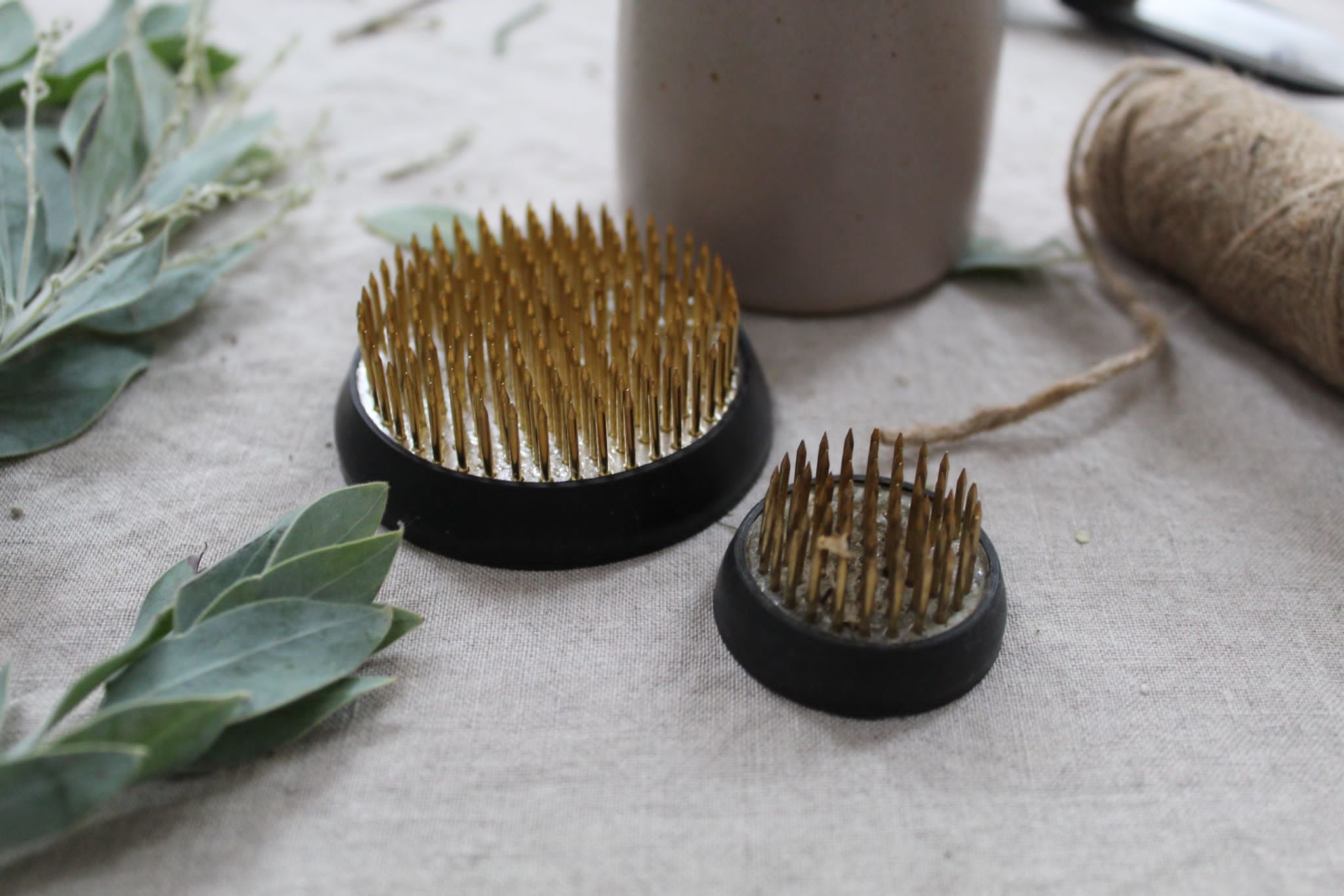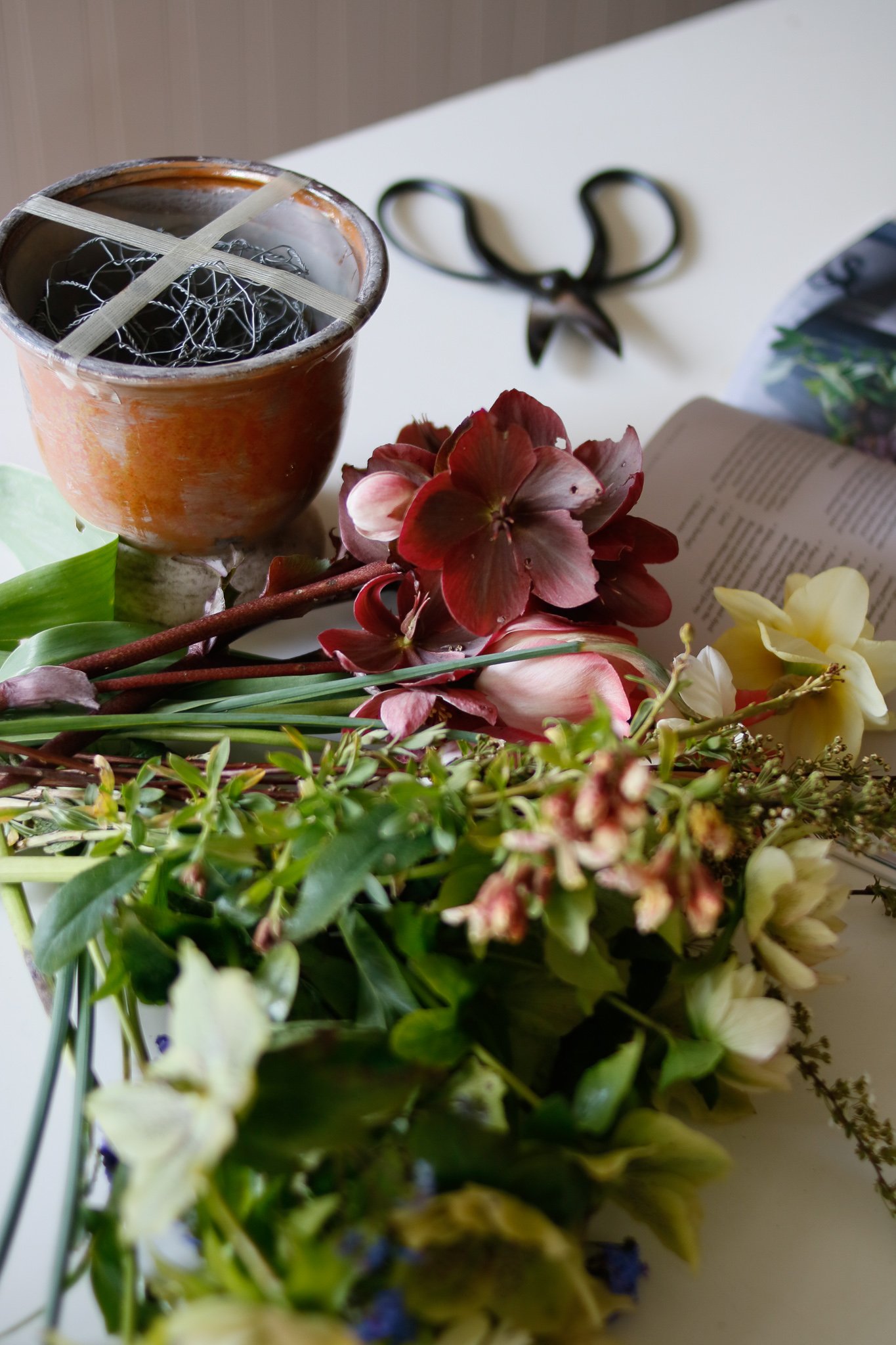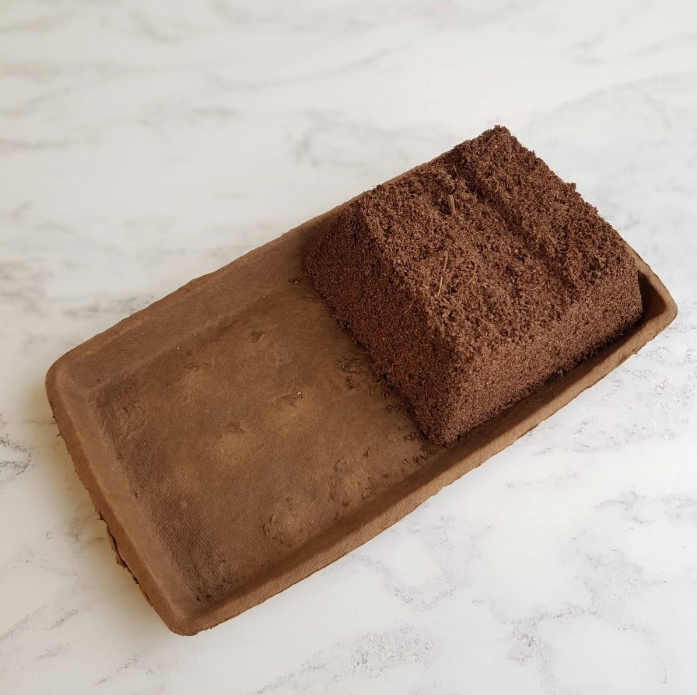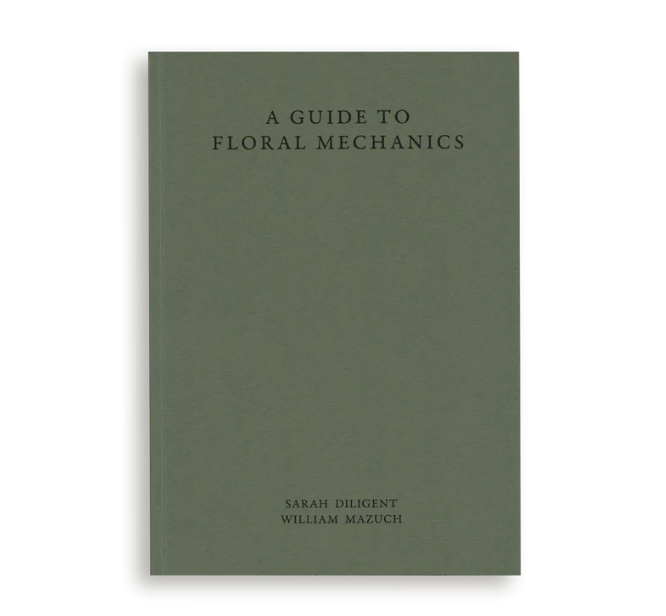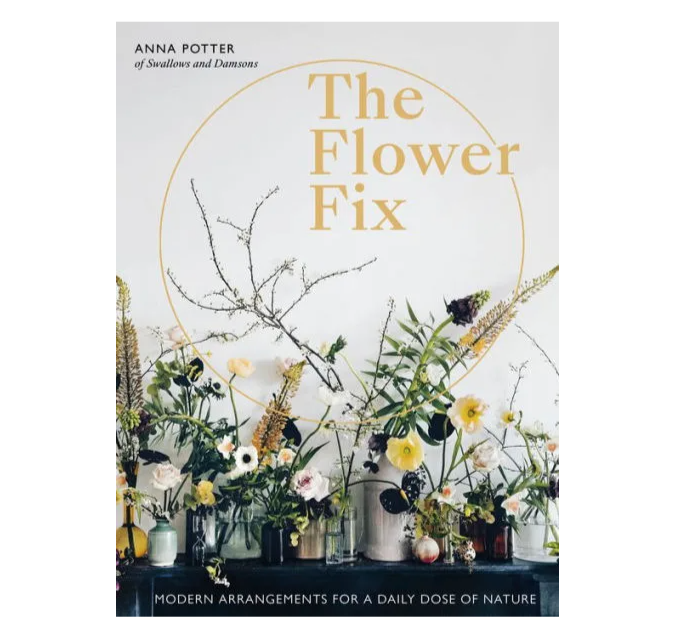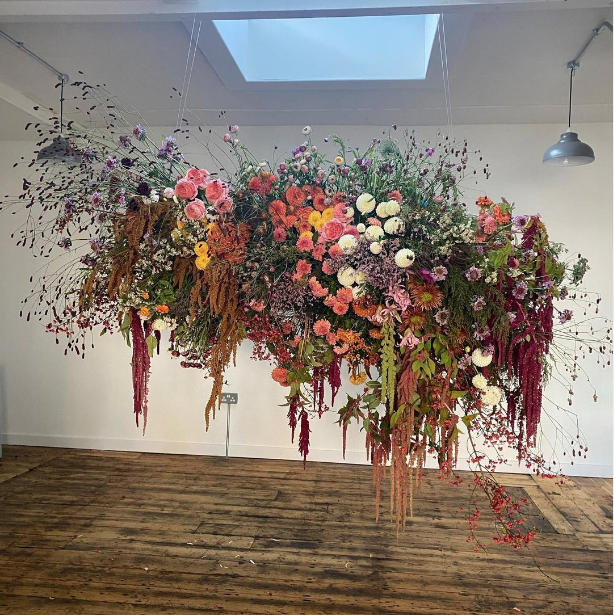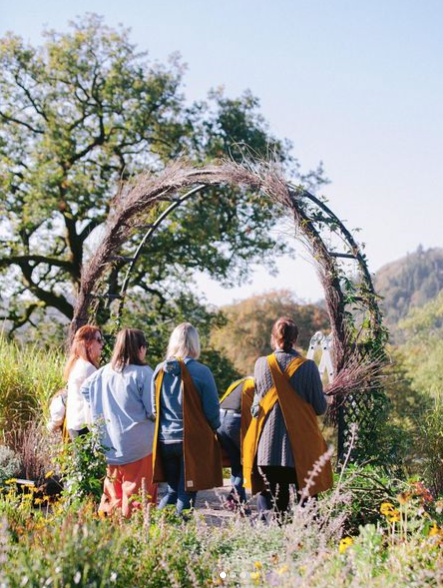Sustainability - Part Two
Sustainable Floristry
Part Two - Mechanics
As we continue to explore working more sustainably as florists we’re taking a closer look into the mechanics and products used in the industry, the effects they can have, and some easy changes you can make to improve your own methods.
Floral mechanics and packaging
A huge topic in the floral industry at the moment is sustainable mechanics and packaging.
The main issue with how things currently stand is the excessive use of traditional floral foam. Reducing and ideally eradicating its use is vital for a more sustainable approach in the floral industry. So we’re going to give you the low down on what it is, why it’s so bad for the environment and what other alternatives are available.
So what is floral foam? And why is it so damaging for the environment and for the people who use it?
Floral foam is a type of foam used by florists to hold flowers in place. It was invented in the 1950s by a man named Vernon Smithers. Smithers was a florist who was looking for a way to create stable and long-lasting flower arrangements that would not require frequent watering. He experimented with different materials and eventually developed floral foam, a lightweight and porous foam that could absorb and hold water for extended periods of time.
The popularity of floral foam quickly grew, and it became the go-to material for florists around the world. Its ability to hold water and provide a stable base for flower arrangements made it a game changer in the floral industry. However, over the years, concerns about the environmental impact of floral foam have grown, with the product itself being made of plastic and containing a variety of chemicals, including formaldehyde, carbon black, and phenol. These chemicals are not only harmful to the environment but can also pose a risk to human health.
One of the main reasons floral foam is bad for the environment is because it is not biodegradable. This means that when it is discarded, it does not break down naturally and can remain in the environment for hundreds of years. Over time, the foam can release harmful chemicals into the soil and water, which then have negative impacts on plants, animals, and humans.
In addition to these issues, floral foam is also made from non-renewable resources, such as petroleum and the production of floral foam requires the use of large amounts of energy and resources, contributing to greenhouse gas emissions and ultimately climate change.
As floral foam is often only used once and then discarded, it also contributes to the growing problem of single-use plastic, and as more and more plastic waste accumulates in the environment, the significant threat to wildlife and ecosystems is ever rising.
So with all these very negative facts to consider, let’s summaries why we should be looking for alternatives, such as biodegradable or reusable floral arrangements.
Environmental impact: Sustainable methods use resources in a way that minimises their impact on the environment. This means reducing waste, conserving water, and using non-toxic materials. By using sustainable methods, we can help protect the environment for future generations.
Health: Many traditional methods of flower arranging involve the use of chemicals that can be harmful to human health. Sustainable methods prioritise natural, non-toxic materials and avoid the use of harmful chemicals.
Cost-effectiveness: Sustainable methods can often be more cost-effective in the long run. For example, using reusable vases and containers can save money over time compared to using single-use materials like floral foam.
Social responsibility: By using sustainable methods, we are able to advocate for our local communities, protect the environment and support businesses that prioritise environmental and social responsibility.
So what are these sustainable and eco friendly alternatives?
There are many different ways in which we can make changes to our floral mechanics to accommodate a more sustainable and eco conscious business. It’s about being experimental, inventive and imaginative - thinking outside the box and working out how we can make the following ideas and methods work for our particular style.
The main thing we want is to support stems, provide moisture/water and ideally not have lots of the mechanics on show.
Chicken wire: Chicken wire is a versatile and sustainable option for floral arranging. It provides a sturdy base for flower stems, can be easily shaped to fit any container, and can be reused multiple times. It’s reusable and works really well for arrangements in water, giving great longevity to stems.
Willow/branches: These can act very like chicken wire when manipulated into a net like configuration with bending and snapping into place. String can also be used to bind elements together. This can be a great fully compostable alternative to chicken wire and used for arrangements that will be staying in one place for a while, like funeral arrangements or outdoor wreaths.
Flower frogs: Flower frogs are metal or glass pins with a spiked top that are used to hold flowers in place. They are reusable and can be placed in any container and are also really long-lasting. They can also add a very sophisticated style to arrangements.
Sphagnum moss: Sphagnum moss is a natural and biodegradable alternative to floral foam. It can be used as a base for flower arranging, either inside chicken wire, bound with string or contained in a biodegradable food caddy bin liner and really helps to retain moisture in the arrangement. It is a great option for small arrangements and can be composted after use (remove from chicken wire before composting if using).
Coconut coir: Coconut coir is made from the husks of coconuts and can be used as a sustainable alternative to floral foam. It is biodegradable, can retain moisture, and provides a sturdy base for flower stems. It is a great option for large floral arrangements.
Agra wool: Agra wool, also known as excelsior or wood wool, is a natural, biodegradable material that is a great alternative to floral foam. It is made from wood fibres that are shredded and then woven into a mesh or netting. Agra wool can absorb and retain a significant amount of water and provides a stable base for flower arrangements. It can also be easily moulded into different shapes and sizes to fit any container. It is fully biodegradable, and unlike floral foam, agra wool is non-toxic.
What about ready made products?
There are also a number of products on the market that have been designed to be more eco conscious than floral foam. These products are very new to the market and come from specific manufacturers who are able to charge more money than, say, the cost of making wire or willow bases yourself, but in this fast paced world where time is money, some of these products could well be where things are headed. It is important that those who have brought so much floral foam into the industry are making the effort to bring about change and seeing the importance of bringing sustainability to the heart of the industry when they have so much power over that market.
FibreFloral™ Design Media is a natural product based on volcanic basalt rock. It can be used wet with fresh flowers, or dry for dried and artificial flowers. After use, it can be reused for growing seeds and cuttings.
https://www.oasisfloral.co.uk/catalogsearch/result/?q=fibrefloral
OASIS® TerraBrick™ Floral Media is made with plant-based, renewable, natural coir, and a compostable binder, certified OK compost HOME and OK compost INDUSTRIAL
https://www.oasisfloral.co.uk/oasisr-terrabricktm-floral-media
So how do I make all of these work for me in my business?
The best advice we can give on how to make your own business more environmentally friendly when it comes to your mechanics is to practice. Try different vessels, different methods and make it part of your ongoing learning - because we’re all learning, all the time aren’t we? Can you hire or commission structures to make larger installations with containers rather than relying on foam? Could you make the mechanics part of the display with some beautiful bowls and flower frogs? See it as a creative project rather than something negative to battle, there are such amazing displays you can create, don’t let floral foam hold you back any longer!
A quick word about packaging:
Another area that needs to become more focused on the environment is the use of single use plastics in the way we package our bouquets and delivery items. Traditional packing methods for our flowers often use non-biodegradable and non-recyclable materials such as cellophane, sellotape and plastic card holders, to name a few, which contribute to waste and pollution in both waste and production. Sustainable packing methods are such easy swaps to make and in using materials that are biodegradable, compostable, or recyclable, you can significantly reduce the environmental impact of your flower arrangements.
What swaps can you make?
Biodegradable/compostable bags, made from natural materials such as cornstarch or vegetable starch and can be composted after use. They are a great alternative to plastic bags and can be used to package flowers for transport.
Paper wraps can be a sustainable and eco-friendly alternative to plastic wraps. They are recyclable and can be composted after use.
Paper tape is a more sustainable and eco-friendly option than sellotape. It is made from natural, biodegradable, and renewable materials and can be easily recycled or composted after use.
Instead of using single-use plastic containers, you can use reusable containers made from materials such as bamboo, metal, or glass. These containers can be used multiple times and are a more sustainable option.
Using recycled or recyclable materials for packaging is an eco-friendly alternative to non-recyclable materials. For example, using recycled cardboard boxes or paper packaging can help reduce waste.
Using natural materials such as jute twine, raffia, or hemp to package flowers are a great alternative to plastic ribbon or wire. These materials are biodegradable and can be composted after use.
Bamboo skewers can be used for card holders and mossing pins in place of plastic and metal, making arrangements compostable and biodegradable.
It’s also worth thinking about customer demand, as consumers are increasingly aware of the environmental impact of their purchases. Lots of us are making various changes in our purchasing habits to accommodate a more sustainable approach and therefore are more likely to choose products that are sustainably packaged. By using sustainable packing methods, florists can demonstrate their commitment to environmental and social responsibility which can, in turn, help build customer loyalty and increase brand reputation.
Where can you learn more?
Books:
A Guide To Floral Mechanics by Sarah Diligent and William Mazuch https://agtfm.com/products/the-book
The Flower Fix by Anna Potter https://www.barnesandnoble.com/w/the-flower-fix-anna-potter/1130040726?ean=9781781317884
Courses:
Tallulah Rose have a vast range of courses, ranging from half days to full weekends of learning, all based around sustainable arranging methods. Well worth a look if you want to upgrade your skills:
https://tallulahroseflowers.com/floristry-courses-3/
Our good friends at the Bath Flower School do some amazing sustainable courses including:
Sustainable Floristry Foundation - https://www.thebathflowerschool.com/courses/sustainablefloristryfoundationcourse
Sustainable Large Scale Installations - https://www.thebathflowerschool.com/courses/sustainable-large-scale-installations
Sustainable Sympathy Flowers - https://www.thebathflowerschool.com/courses/sustainable-sympathy-flowers
The Good Florist offer and great Installations & Scaling up course, teaching sustainability is woven into all their courses offered - https://ro-emmott.squarespace.com/scalingupandgrowyourbusiness
Good insta accounts to follow:
https://www.instagram.com/sustainablechurchflowers/
https://www.instagram.com/sustainablefloristry/
https://www.instagram.com/shaneconnollyandco/ (the man who did the flowers for the late Queen)
https://www.instagram.com/josephmassie/
https://www.instagram.com/floribundaroseflorists/
Next week we’re going to focus on how you can implement these things in your own business/practice.



